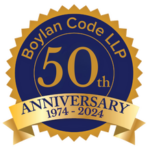It seems like everyone is building an app these days – banks, restaurants, the grocery store, and even various law firms and solo practitioners, for example. Not surprisingly, Uncle Sam’s gotten into the act, too: earlier this year, the Wage and Hour Division of the U.S. Department of Labor (DOL) released its first smartphone app, a timesheet.
The free “DOL-Timesheet” app provides employees with a user-friendly method to independently track regular work hours, break time and any overtime hours for one or more employers and determine the wages they are owed. The app also allows users to add comments on any information related to their work hours and view summaries of work hours in a daily, weekly and monthly format with a gross pay calculation. There are also other employee-helpful features, such as a glossary of wage-and-hour terms, materials about wage laws, links to DOL web resources and, conveniently, a function that allows users to email the DOL directly from the app in one quick step (via a “Contact Us” page). To set up the app, the user is simply asked to enter the employer’s name, the hourly rate of pay, and the start of the workweek. One notable feature of the app occurred when I entered $6.00 as the hourly rate. A warning popped up, alerting me that I had entered an amount less than the federal minimum wage.
Of course, as with most apps, it does not do everything one might expect. For example, it functions just fine so long as the employee only has regular and overtime (at time-and-half) wages to track. It does not, however, handle more complex or less common wage calculations, including tips, commissions, bonuses, holiday pay, or shift differentials among others. Actually, given how many employees in the hospitality industry receive tips, and how many employees in some sales capacity receive commissions, the DOL app might not work for many employees. Also, the app does not help with state variations. And while the DOL app is currently compatible only with the iPhone and iPod Touch, the Department has indicated that it plans to explore updates that enable similar versions of the app for other smartphone platforms, such as the Android and BlackBerry platforms. In addition, like other app developers, the DOL is not resting on its laurels. It is planning to explore updates that include additional pay features, such as tips, commissions, bonuses, deductions, holiday pay, pay for weekends, shift differentials and pay for regular days of rest.
Despite its deficiencies, DOL Secretary Hilda L. Solis said at the launch of the timesheet app that she was pleased with her department’s ability “to leverage increasingly popular and available technology to ensure that workers receive the wages to which they are entitled.” “This app will help empower workers to understand and stand up for their rights when employers have denied their hard-earned pay,” Solis added. Going further, the DOL calls this new technology significant “because, instead of relying on their employer’s records, workers can now keep their own records. This information could prove invaluable during a Wage and Hour Division investigation when an employer has failed to maintain accurate employment records.”
In a typical wage and hour case, the employee claiming that he/she has been denied wages owed under the federal Fair Labor Standards Act (FLSA) generally has the burden of proving that his/her employer violated the FLSA. If, however, the employer’s payroll-related records are inaccurate or inadequate, an employee may satisfy that burden by proving that he/she has in fact performed work for which he/she was not compensated and by producing sufficient evidence to show the amount and extent of that work “as a matter of just and reasonable inference.” The burden then shifts to the employer to come forward with evidence of the exact number of hours worked by the employee, or with evidence that negates the reasonableness of the inference to be drawn from the employee’s evidence. If the employer fails to produce such evidence, a court may award damages to the employee, based on the employee’s calculation of the hours worked.
Over the years, courts have allowed employees bringing wage claims to use a variety of means to reconstruct hours worked, including diaries and logs maintained in the seemingly ever-present spiral notebook. The DOL’s new app will most likely consign such 20th century employee record-keeping tools to the same dust heap of history as the cassette tape recorder (as an aside, employers should keep in mind that audio recorder smartphone apps are also already available to their employees) and better enable employees to challenge the calculation of their pay with detailed records and notes. With this new technology, employers will certainly need to be prepared to defend the accuracy of their own records in the event of a dispute with an employee or the DOL.
Furthermore, employers that expect (or even allow) remote off-shift work through the use of smartphones should take special note of the convenience associated with recording time via the DOL’s new app. Class action lawsuits seeking unpaid overtime claims for non-exempt hourly workers who use smartphones to check email and conduct other business outside their regular work hours continue to be filed and are gaining attention. The DOL app makes it very easy for such employees to log in a time entry immediately after concluding an email exchange.
The introduction of the DOL-Timesheet app provides further proof of the DOL’s aggressive approach to the enforcement of the FLSA, as well as the need for employers to keep accurate time and payroll records for employees. Of course, it remains to be seen whether or not the new app will garner much attention and use from employees. However, regardless of its ultimate popularity, the DOL app serves as a clarion call to employers to get their proverbial wage-and-hour houses in order.
Scott Mooney is an Associate in Boylan Code’s Litigation Group, concentrating his practice on commercial and municipal litigation as well as employment law and related disputes. For more information, please contact Scott at (585) 232-5300 or smooney@boylancode.com.


